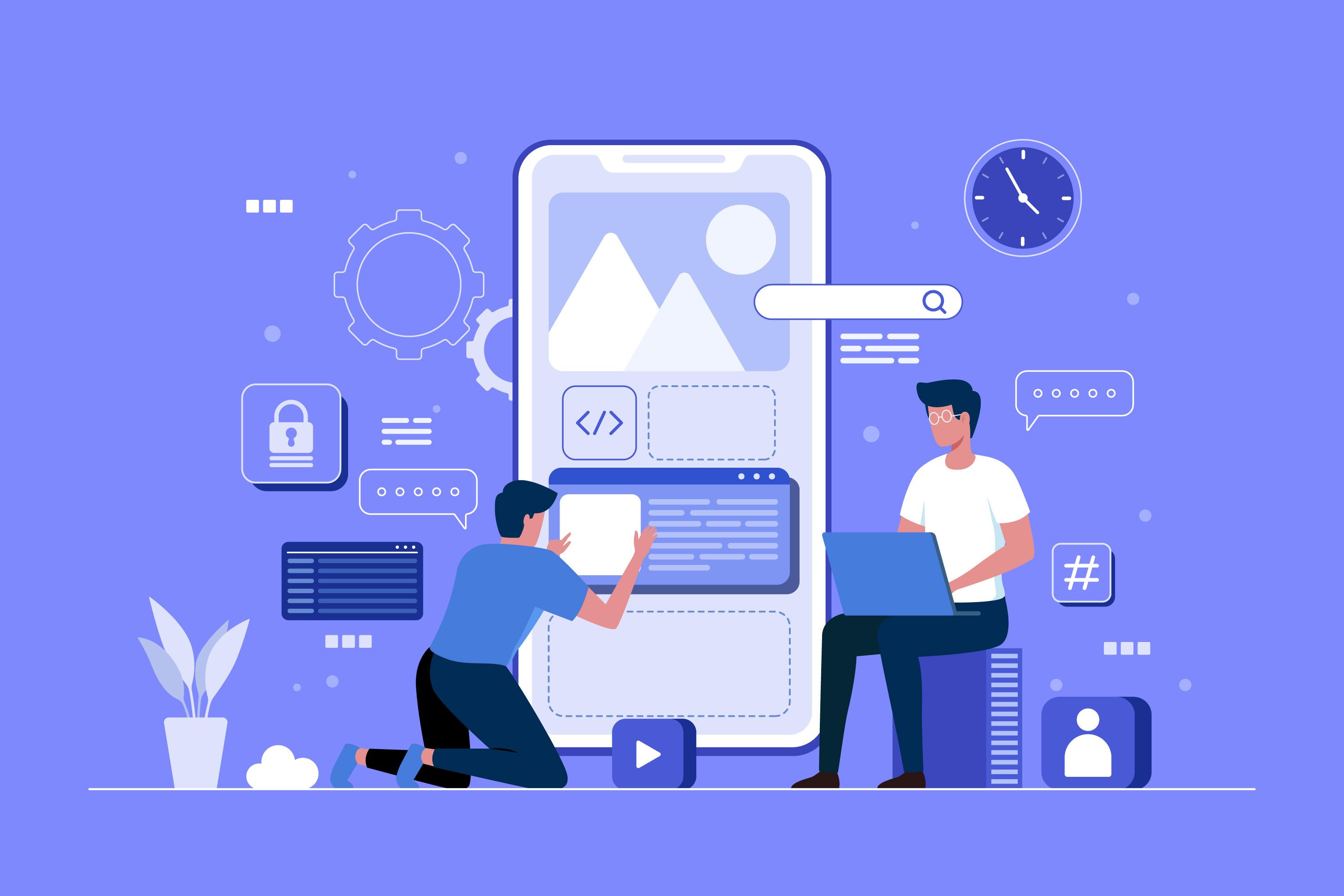Backend Development for Mobile Apps: A Quick Guide
By
Last Updated May 06, 2023
Table of content
1. Backend Vs. Frontend Development
2. Backend development services for mobile applications
3. Working Architecture and Server
4. The Software Stack of the Backend
Servers
Database
Middleware
Web server software
Database software
Clients for Git
Platform tools for microservices
The local development context
Service tools for collaboration
App performance evaluation software
6. Backend Development's Benefits
Summary
7. How might syoft assist you with your backend development for mobile apps?
With the rise in popularity of mobile applications, the focus has shifted away from just creating a great app and toward understanding the fundamental aspects that distinguish a great app from a mediocre one.
Without mentioning its effective mobile app backend architecture, every component of an app that gives a simple experience is incomplete. In that light, use this article as a guide to learn why backend development is so crucial, what software stacks are used for backend architecture, and what technologies can help you build a solid backend process.
Backend vs. Frontend Development
If you ask a developer how frontend and backend development vary, they will tell you that the frontend utilises codes to make an app seem nice while the backend writes codes to make it function.
Let's begin by defining what a backend server for mobile apps is and how it differs from frontend development
However, both app development methods are reliant on a variety of fundamental factors —
Frontend applications are those that you download from the Play Store or the App Store on your smartphone. Every app on your smartphone, whether it's Instagram, Facebook, or Calculator, is a front-end mobile application. How? You can link directly using buttons, text fields, flips, and other front-end apps.
They are also mobile applications because they function on mobile phones.
A front-end developer is in charge of converting the app's design into the code needed to display it correctly in the browser. With the introduction of responsive site design, the task became more meticulous. The developer must not only verify that the design is compatible with all current browsers and mobile devices but also consider how the design appears in different computer resolutions and browser widths.
Let's look at what backend development is now that you know what frontend development is.
In layman's terms, think of the backend as an additional application for your mobile app. It's a piece of software that operates on computers known as servers. Backend development for mobile applications enables the application's main functionality. It consists of servers, databases, middleware, and other components that may be accessed via an application programming interface over the internet (API).
A backend developer is in charge of the mobile app server, which connects the site's content to the CMS and develops the logic that makes everything work as it should. On the design front, they're in charge of translating the designs and front-end development process into a CMS configuration that allows clients to manage their app content intuitively. If they make the backend architecture of the mobile app very basic, the clients are unlikely to have control. And if they complicate it, the likelihood of clients being lost in the design increases.
Backend development services for mobile applications
There are several things to consider before implementing a mobile backend into your app development. The most basic functions to use while developing mobile apps are:
Cloud server - Cloud servers, which come in various sizes and are stored in a secure location, are now affordable to everyone. Google App Engine, Microsoft Azure, and Amazon AWS are the most popular cloud servers. They are commonly used by large corporations and are dependable.
Third-party services or Software-as-a-Service (SaaS) – It's possible that some of the features you require are already available through other providers. They provide ready-to-use backend solutions for front-end apps. You only need to register and subscribe.
Mobile Backend as a Service (MBaaS) is an option if you don't want to create your backend servers or put resources into a cloud-based server. There are a plethora of separate MBaaS providers available these days, each with impressive capability and an analytics platform for monitoring your apps.
The most versatile and powerful solution is a custom server. A custom backend can accomplish anything that SaaS or MBaaS couldn't. The obvious disadvantage is the cost of setup and implementation. It necessitates the hiring of a dedicated backend coder or a team. Depending on your app's needs, the custom backend can be a simple application or a sophisticated distributed system.
Working Architecture and Server
Prepare yourself; we're about to get into the nitty gritty of bespoke backend development, so you and your team are completely aware of all the nuances required to make your mobile app a success. Backend development, in layman's words, is the process of preparing your mobile application to function as planned. To make this possible, various principles make up the 'Software Stack' on the server or backend side.
Before I go any further, I'd like to take another minute of your time to point out that the backend of each application looks different. Data warehouses, cloud–based servers, containerization, BaaS providers, and API usage are just a few of the areas of differentiation.
The Software Stack of the Backend
Rather than leading you down the rabbit hole, I'll break down the backend's technology stack into four parts: database, server, software, and operating system.
Here are the component specifications -
Servers
A backend server for a mobile app, whether in the cloud or on-premises, is the network's lifeblood. It provides shared resources that networks require, as well as serves as a mobile app hosting platform. Encryption and security, file storage, email, databases, and web services are examples of shared resources.
Frameworks for backend development in server-side software
These servers now use virtualization to accommodate a variety of apps. Another word for servers is "servers." Containerization is the process through which servers separate the operating system into segregated applications.
Database
The database is what makes a website or program dynamic. The database is expected to accept the query, get the data, and send it to the app user whenever a user requests the app.
Middleware
Middleware is server-side software that connects the front end and back end of an application. It allows the client and server to communicate. It can be divided into several layers, including business and presentation layers.
It allows on-premise and cloud apps to communicate and provide services like error management and data integration. Business process management, user engagement, authentication, content management, and other functions can all benefit from effective middleware.
To begin with, these three components form the foundation of backend development.
Let me now tell you about the greatest mobile app backend technology for those who are still with us. Because they have been used, they are said to as the best.
1. Web server software
NGINX
This open-source software is used for a variety of tasks, including web serving, caching, reverse proxying, video streaming, and load balancing. It also acts as a load balancer and reverses proxy for TCP, UDP, and HTTP servers, as well as a proxy server for email (POP3, IMAP, and SMTP).
Apache
Apache, another open-source program, is used by nearly 50.1 percent of all apps on the planet. In the web server sector, the mobile app hosting platform has demonstrated its dependability.
2. Databases software
MySQL
MySQL is an open-source relational database that is simple to set up, scales quickly, and is free. For these reasons, we have put our faith in MySQL to handle all of our database needs.
MongoDB
The program records everything.
3. Clients for Git
SourceTree
The tool makes it easier for developers to work with Mercurial and Git repositories. It simplifies repository management, allowing developers to focus on their work.
Client for GitHub
The program is used to create HTML, CSS, and JavaScript-based cross-platform desktop apps. It provides developers with a uniform cross-platform experience that is completely free.
Bonus: Consider the Top 10 Cross-Platform App Frameworks
4. Platform tools for microservices
Kubernetes
The open-source platform for container cluster management intends to provide a place for scaling, automating deployment, and running application containers across several servers in a cluster.
Docker
Docker brings microservices into the picture by providing developers with simple and quick packaging, deployment, and distribution tools for creating segmented apps. It also includes a toolkit that includes registration, native clustering, and cloud services.
5. The local development context
WampServer
Using PHP, Apache, and the MySQL database, this open-source development environment tool allows mobile app development companies to create online applications. It is along with SQLite and PhpMyAdmin to aid database management.
XAMPP
This open-source web server solution stack includes an Apache distribution that includes PHP, Perl, and MariaDB all in one single file. The XAMPP package has been designed to be extremely simple to install and use.
6. Service tools for collaboration
Slack
For quite some time, this well-known cloud-based collaboration and messaging program has been transforming workplace communication. It's a fresh layer of protection.
It's a new layer of business technology that allows employees to collaborate more efficiently, connect all of their other software tools and services, and access the information they need to accomplish their best work.
Jira
Scrum and Kanban are used to manage projects in this web-based project management solution. Toyota made the tool famous for supply chain management in the 1980s.
7. App performance evaluation software
JMeter by Apache
The program can be installed on the server and used to test the app's performance and speed in various scenarios. It was formerly exclusively used to test online apps, but it is now also used to evaluate app performance.
AppLoader
Another tool that we swear by is one that we use to test the application by constructing the user interface.
Backend Development's Benefits:
All steps of the app development process rely on the backend. Let's have a look at a few important advantages of backend development:
- Rapid development time
- Cost-efficient
- Concentrate on your core business.
- Improved results in less time
- The time to market is shorter.
- Additional app features
- Cloud infrastructure outsourcing
- Integration and continuous delivery
- Security and Performance
- GDPR-style privacy regulations
summary
We began by discussing how the front end differs from the backend before moving on to the backend app development process. We next looked at the components that make backend development possible, before moving on to the tools that make it all possible.
Let us now conclude the guide by touching base.
APIs are a critical component of backend programming.
Backend development is impossible to discuss without mentioning APIs. APIs allow us to seamlessly integrate apps, software, databases, and services. APIs are critical in the development of server-side software architectures because they allow applications to interact and data to be transmitted.
How might Syoft assist you with your backend development for mobile apps?
At Syoft, we've assisted many clients in developing a solid backend for their mobile apps. For your next mobile app development project, our team of experts will assist you in selecting the ideal backend app solution.
For example, our professionals collaborated with our client Adidas to develop an end-to-end solution for their Middle Eastern users.
To date, the app has been downloaded over 2 million times. In addition, 500k additional users have joined the company.
We created a mobile application using the greatest backend technology and tools for another client, Asian Bank. The program allows users to store, transact, and convert crypto assets into fiat currency. It includes features like cryptocurrency wire transfers, cryptocurrency buying and selling, wallet recharge, and other Bitcoin and Ethereum payments. To date, the app has been downloaded 250k times. There have also been over 50k cryptocurrency transactions.
Recent Posts
Get a Free Quote.
Lets Build Your App!
Connect



.png)
.png)
.png)